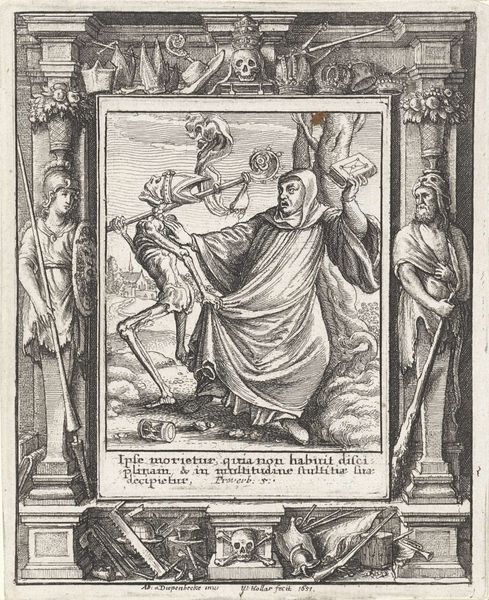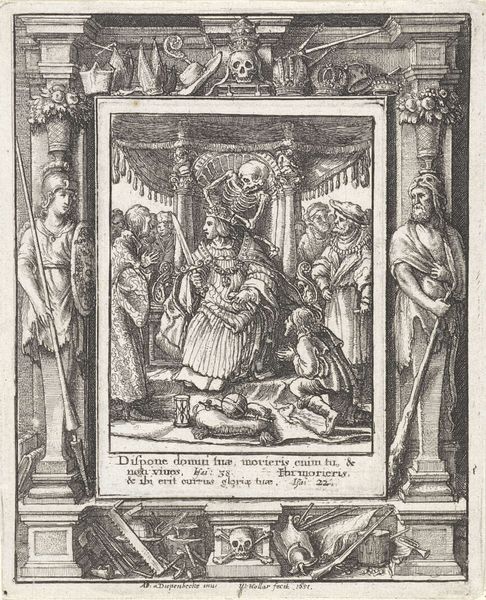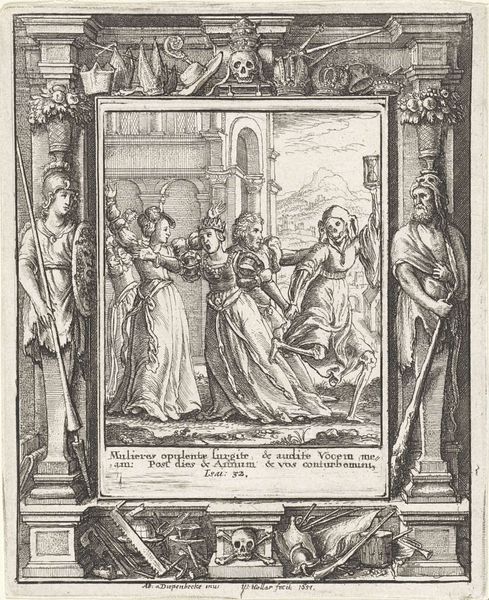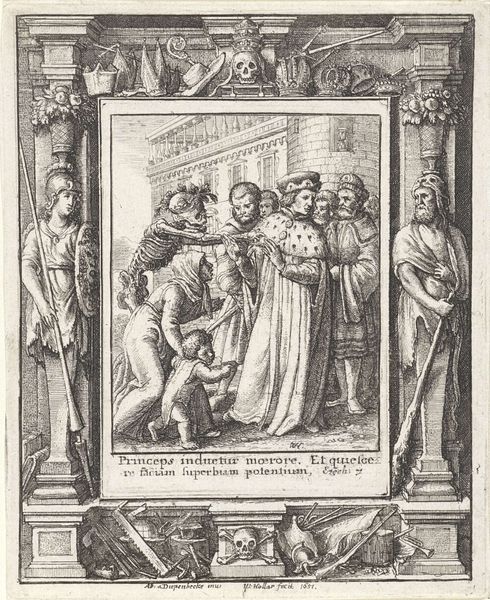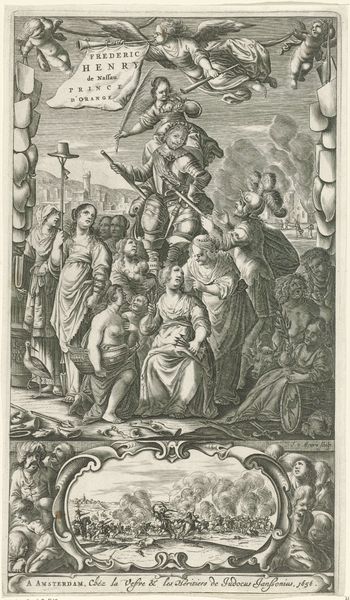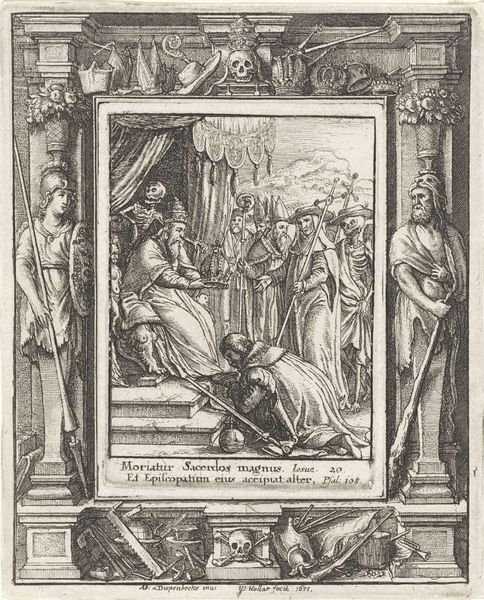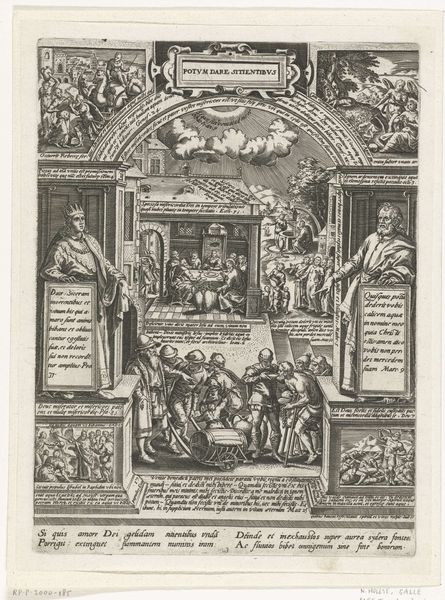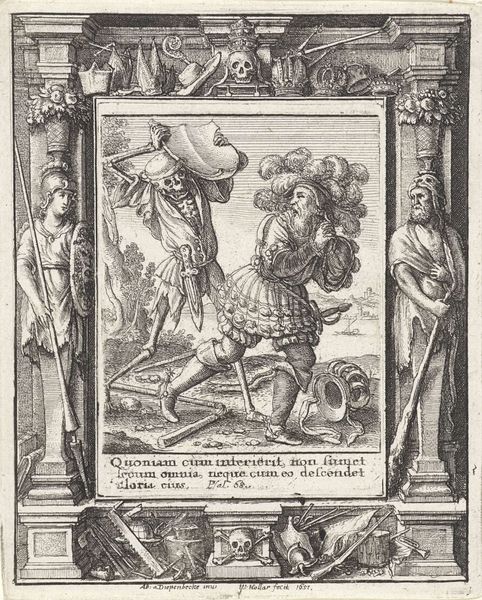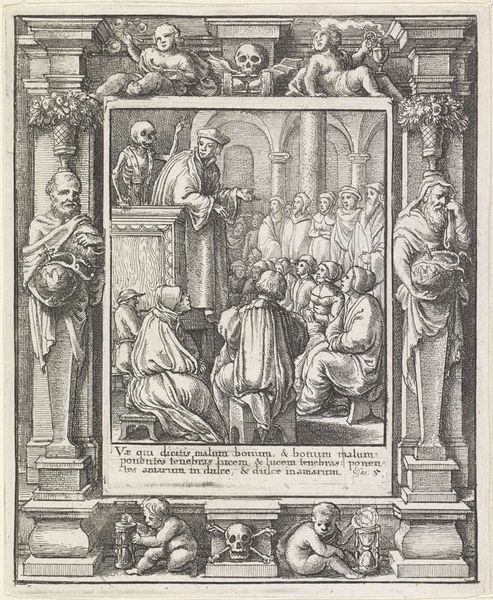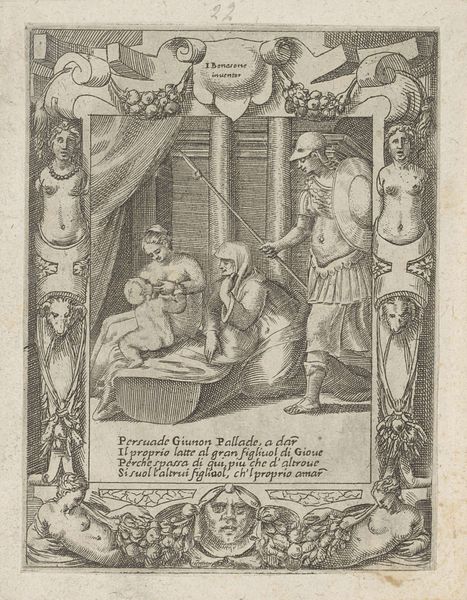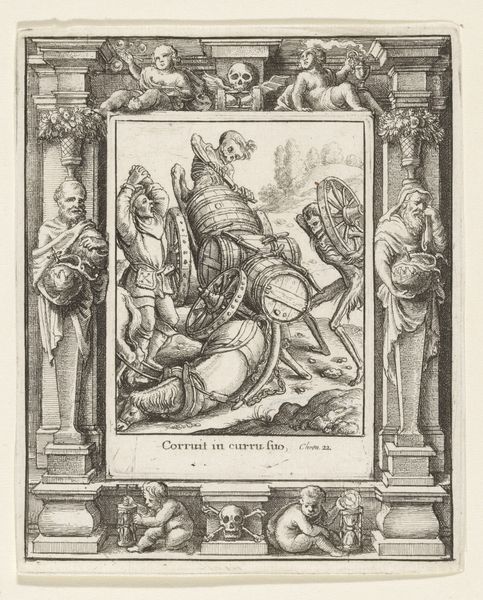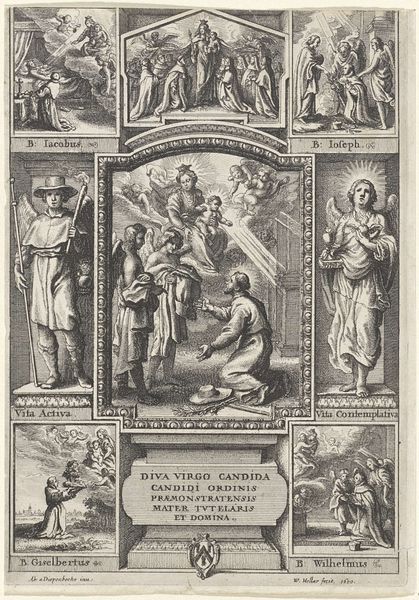
print, etching
#
allegory
#
narrative-art
#
baroque
# print
#
etching
#
death
#
figuration
Dimensions: height 115 mm, width 95 mm, height 77 mm, width 55 mm
Copyright: Rijks Museum: Open Domain
Curator: Today we’re looking at “The Bishop and Death,” an etching made by Wenceslaus Hollar in 1651. It's currently held at the Rijksmuseum. Editor: My first impression is somber. The contrast between the delicate lines and the stark subject matter – a bishop confronted by Death himself – creates a palpable sense of unease. Curator: Indeed. Hollar uses the etching technique masterfully. Note the textures, the gradations of light and shadow achieved with line alone. The labor involved, translating such detail to a printed image, highlights the democratization of such imagery at the time. This allowed the piece to circulate more broadly, prompting discourse. Editor: It's interesting to see the Bishop in his finery, clinging to his crozier, contrasted with the skeletal figure of Death. There’s a clear symbolic message about the universality of mortality, indifferent to worldly status. And what about the sheep in the background? The Bishop's flock scattered and vulnerable. Curator: The sheep speak to the pastoral responsibilities and possible failings of the clergy during that time. Hollar underscores that. I'm curious about the scene above and below this central panel, how Hollar has built in what appears to be classical sculptural figures on either side as though this is a permanent memorial. And yet the tool in the scene beneath feels like an addition. Editor: That is an interesting formal arrangement. There are classical figures on either side acting almost as Corinthian columns in support. But above those is an array of weapons and at the bottom a scattering of more crude implements. These items seem at odds with one another yet together create a picture of human activity and power structures that comment directly on the message embedded within the etching. What would be its message for a modern audience? Curator: Perhaps its timeless commentary lies in examining power and purpose and our understanding of the transience of earthly accomplishment. It asks that we all pause to consider this intersection. Editor: Ultimately, this artwork resonates through the visual power of symbolic contrast, which challenges viewers to reflect on themes of authority, spirituality, and morality. It certainly made me think.
Comments
No comments
Be the first to comment and join the conversation on the ultimate creative platform.
